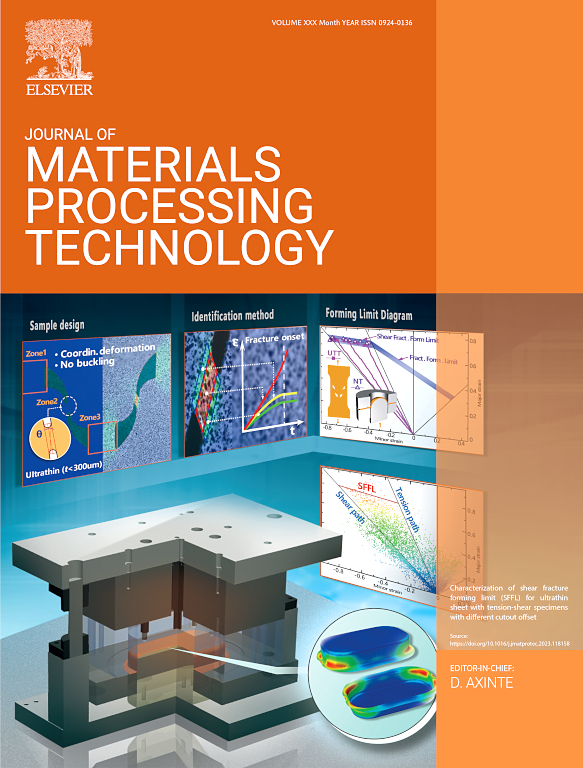原位合金定向能沉积技术在功能梯度NiTi合金中裁剪微观结构
IF 7.5
2区 材料科学
Q1 ENGINEERING, INDUSTRIAL
Journal of Materials Processing Technology
Pub Date : 2025-05-02
DOI:10.1016/j.jmatprotec.2025.118884
引用次数: 0
摘要
通过增材制造(AM)制备的NiTi合金通常存在晶粒粗大、脆性金属间相积累以及对相变行为控制有限的问题,从而导致性能下降和功能应用受阻。为了解决这一挑战,提出了一种通用的金属间调制和功能梯度设计策略,并通过定向能沉积(DED)进行了验证。通过采用多种沉积模式(混合NiTi、梯度Ti/Ni和梯度Ti/NiTi),实现了定制的微观结构梯度。这种方法可以对关键金属间化合物的形成进行空间控制,从而同时增强马氏体转变行为和机械性能(纳米硬度、抗压强度)。模拟-实验耦合分析揭示了AM过程中熔池温度演化和溶质输运的普遍机制,这是金属间化合物发展的基础。这些发现为设计金属系统中的梯度结构提供了广泛适用的方法,为定制功能和结构性能提供了新的途径。本文章由计算机程序翻译,如有差异,请以英文原文为准。
Tailoring microstructure in functionally graded NiTi alloys using in-situ alloying directed energy deposition
NiTi alloys fabricated via additive manufacturing (AM) often suffer from coarse grains, brittle intermetallic phase accumulation, and limited control over phase transformation behavior, resulting in compromised performance and impeded functional applications. To address this challenge, a generalisable strategy for intermetallic modulation and functional gradient design has been proposed and validated through directed energy deposition (DED). By employing multiple deposition modes (Mixed NiTi, Graded Ti/Ni, and Graded Ti/NiTi), tailored microstructure gradients were achieved. This approach enabled spatial control over the formation of key intermetallics, resulting in simultaneous enhancement of martensitic transformation behavior and mechanical performance (nanohardness, compressive strength). A coupled simulation-experimental analysis revealed universal mechanisms of temperature evolution and solute transport in melt pools, which underlie intermetallic development during AM. The findings contribute a broadly applicable methodology for designing gradient architectures in metallic systems, offering new avenues for tailoring functional and structural performance.
求助全文
通过发布文献求助,成功后即可免费获取论文全文。
去求助
来源期刊

Journal of Materials Processing Technology
工程技术-材料科学:综合
CiteScore
12.60
自引率
4.80%
发文量
403
审稿时长
29 days
期刊介绍:
The Journal of Materials Processing Technology covers the processing techniques used in manufacturing components from metals and other materials. The journal aims to publish full research papers of original, significant and rigorous work and so to contribute to increased production efficiency and improved component performance.
Areas of interest to the journal include:
• Casting, forming and machining
• Additive processing and joining technologies
• The evolution of material properties under the specific conditions met in manufacturing processes
• Surface engineering when it relates specifically to a manufacturing process
• Design and behavior of equipment and tools.
 求助内容:
求助内容: 应助结果提醒方式:
应助结果提醒方式:


